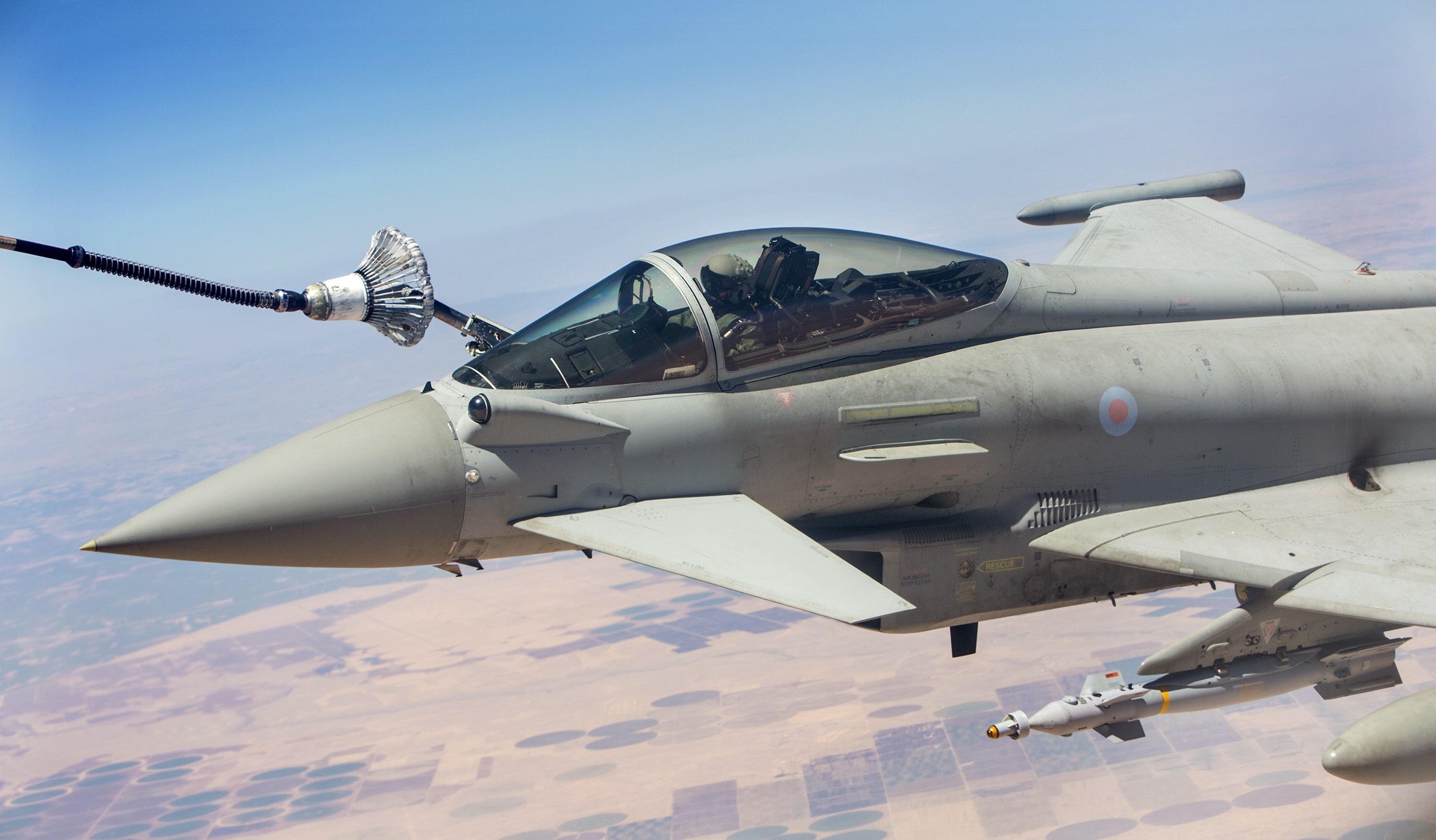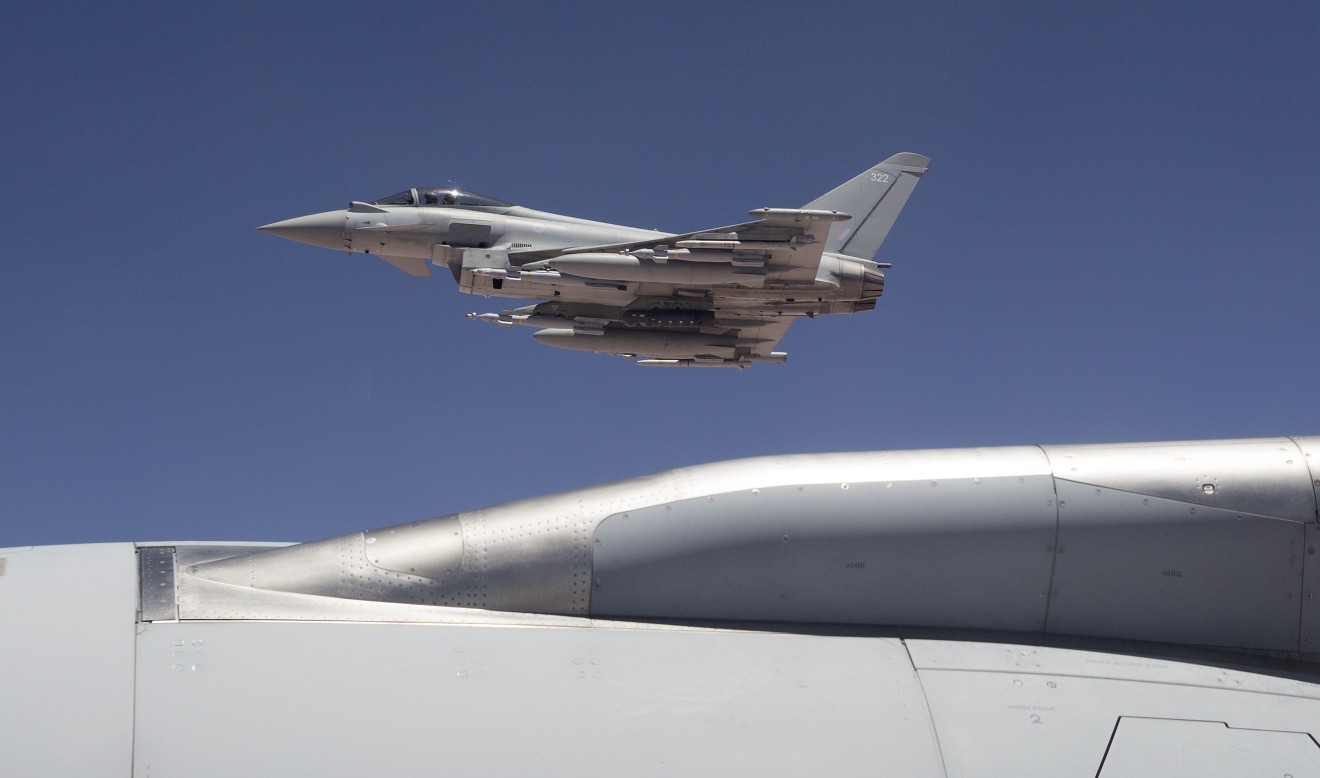Data is the key
For any modern combat aircraft, mission data is as essential as fuel, that’s true today and will remain a fundamental fact of life in the future operating environment. Mission data dramatically increases survivability of the weapon system by “fine-tuning” every sensor to the actual situation on the battlefield. This includes electromagnetic footprints, situational awareness of geo-positions and latest troop movements. That fine-tuning gives the pilots the ability to react swiftly and increase their survivability.
Threat intelligence - the information that’s used to create your mission data - is gathered from a range of assets to ensure forces have the latest, effective, and most accurate data to cope with the range of threats they’ll face. And, as Eurofighter is actually flying regularly in operations, this is business as usual for the Eurofighter community.
During operations, an aircraft returning from a sortie will feed back through certain classified equipment what the aircraft’s sensors picked up. This information all goes back into a modification process and then finds its way back onto the aircraft. Hence that data can be used in future missions, supporting pilots’ situational awareness and increasing survivability. It means, for example, the aircraft’s Defensive Aids Sub System (DASS) is fine-tuned to the right threats.
Exactly how this data is gathered is classified information. However, what we can say is that one area where Eurofighter scores highly is that new mission data can be fed into the weapons system in an extremely short time, often in hours. To put that into context, with some other aircraft the mission data set is generic and that feedback loop can take anywhere up to 12 months.
Indeed, while new weapons integration often grabs the headlines, it’s fair to say that many of the enhancements to Eurofighter’s capability over the last decade have come from the software. With the increase in experience, engineering capability and software enhancements, the overall capability of the aircraft has also been enriched through live operations — proof positive that the ability to modify mission data was given the right priority during the aircraft’s development phase.
Mission data equals aircraft capability
When we discuss ‘data sovereignty’, effectively we’re talking about the control and use of data. You’ve got sovereign control over the mission data. That increases your ability to shape your own mission dataset in order to cope with a specific threat picture.
Mission scenarios can be highly dynamic and therefore you have to be able to adapt. Eurofighter is living proof of the success of that concept. (Rather than using an off-the-shelf data solution).
So what is mission data? There’s a vast range of variables but, for example, it could include the frequencies of enemy radars, and data about other weapons systems in the airspace. Each one of these will have their own emission signature and that's something that you’d classify and track.
When all this information is fed into the aircraft it increases the pilot’s situational awareness and also the weapons system’s sensitivity towards potential threats.
As the aircraft is designed to allow data to be loaded on the flight line, squadrons can carry out a mission, return, adjust the data, and fly with new data on subsequent missions. For example, that might mean adjusting the sensitivity of sensors to particular threats. Doing that would improve the capability and survivability of the aircraft, so in short, you can argue that mission data equals aircraft capability. That is very important considering that in the past we have seen very slanted views on which parameters to use to classify one aircraft as ‘better’ than another. It is not just thrust, it is not just agility, or stealth, that needs to be taken into account but also data sovereignty.

And in the future, the reliance on mission data will grow. You will only be able to operate in a contested environment with the most up-to-date and adapted mission data. Looking at other available platforms, we see the Eurofighter maintaining this operational advantage for quite a long time.
It’s in the DNA, not the black boxes
This sovereignty on data, and in effect capability, has been built into the DNA of the aircraft. And in times of on-going political discussions about independence and increased debate around defence responsibility in Europe, sovereignty is a key topic to consider.
Many Air Forces have their own experiences of having to cope with the restrictions ´black boxes’, give them. We hear this frequently when talking to potential new customers. And they are not positive.
Therefore independence is a key point, particularly in a world where geo-strategic relationships can change over the years. Having full control and sovereignty of your own mission data is crucial.
You want that the control and sovereignty of sensitive data in your hands, rather than being dependent on the strategic intentions of other nations
CASE STUDY: MISSION DATA
The UK Royal Air Force’s Air Warfare Centre (AWC), based at RAF Waddington in Lincolnshire, is the beating heart of the UK’s mission data operations. Among its roles, the AWC collects and analyses data from operations and then provides this data to various platforms, user groups and mission support centres within the UK and across the world.
For example, if an RAF Typhoon encounters an unknown radio frequency contact while on a mission, it will collect a wide range of data about that contact using its on-board sensors. Following the mission, that data will then be downloaded and analysed, which will identify the contact (perhaps it’s a new or modified threat radar system) and then be used to create a new mission data set in time for the next mission – one which will allow the Typhoon to recognise the previously unknown contact and deal with it appropriately. For RAF Typhoons, because of their open systems and the UK’s sovereign mission data capability, this process can take just hours. For some other aircraft, where mission data needs to be updated by its foreign supplier, it can take months.
In 2014, the UK government began working with Eurofighter partner company Leonardo to support the mission data capabilities of international Typhoon operators and other export customers. Based within RAF Waddington and supported by Leonardo’s specialist Electronic Warfare Operational Support (EWOS) capability, the ‘UK Partnered EWOS’ team creates, develops and maintains UK-sourced Electronic Warfare data, which can be released on a government-to-government basis in support of exports. This data can then be used to form the basis of a sovereign mission data capability for a country operating the Typhoon. Support from the UK’s Partnered EWOS team ranges from assistance with advice on establishing and refining EW requirements and data set development, through to helping establish a full, in-country Electronic Warfare centre with similar capabilities to the AWC, providing the operator with the sovereign ability to update and install their own mission data without needing to request data or permission from a foreign country.
As well as understanding the operational aspects of mission data, Leonardo’s engineers also lead the delivery of the Typhoon’s Defensive Aids Sub System (DASS), so they can ensure that the aircraft’s protection stays as up-to-date with the latest mission data as it flows in from theatre.
In September 2018, Leonardo opened a new £2M extension to its Cyber and Electromagnetic Activity Academy in Lincoln – an extended training offering that allows 150 students to learn at any one time.
As well as continuing to train UK MOD personnel, Leonardo also offers training to other Typhoon operators, ensuring that they have the skills to support their own sovereign mission data operations.
